
Honda XR125
First conceived in 2003, this 124cc bike is an excellent entry level dual-sport bike. Good for town riding and a spot of weekend fun offroad. With it’s low 130kg weight, large 19” front and 17” rear wheels, along with a fuel efficiency of around 60mpg (3.21L /100kms). The Honda XR125 is the perfect way to get started on trail and off road riding.
The upward riding position, long comfortable seat that can easily accommodate two people and the option to have an added luggage rack attached to the rear make this an excellent bike to travel on and off-road in Vietnam.
Check out our related post on the Honda XR125L for a full in-depth look at this bike in Vietnam.
- 149cc
- 4-stroke
- 130kg wet
- 110km/h top speed
- Electric start (2010 has kickstart)
- Low maintenance schedule. Change the oil every 1000kms
- Not native to Vietnam, it’s only sold through private retailers, not Honda.
Honda XR150L
An upgraded version of the XR125. With a bit more power, the bike is now capable of more serious offroading. The Honda XR 150cc is one of the fastest growing motorbike models in Vietnam, and for good reason.
The imported 150cc dual-sport motorbike works hard like an old farm tractor, and has even been marketed as an “...all purpose farm bike…” in parts of the world. This reliability has captured the attention of the local Vietnamese and foreigner related rental companies. In many ways, the perfect motorbike for Vietnam.
- 149cc
- 4-stroke
- 129kg wet
- 12L fuel tank
- Soft suspension & long seat
- Excellent motorbike for Vietnam
Honda CRF150L
New to the world and entirely Asian, the Honda CRF150L was born in Indonesia in 2017. This is an entry level dirt bike with the CRF reputation on its side. Side by side it's basically an XR150 with more suspension and bigger wheels.
Designed for the off-road enthusiast the bike is equipped with long suspension, spoke wheels, and a 18” rear & 21” front tire set up. The cheapest bike in the CRF line up, this is an economical way to get into quality dual sport bike.
- 149cc
- 4-stroke
- 117kg dry weight
- Exclusively an Asain motorcycle
- Available in red or black
Honda CRF150R
Harder to find than a quite drive through Saigon, the Honda CRF150R is a mini race bike with big capabilities. Designed to be ridden hard, it’s 20kg engine packs a lot of RPM’s & attitude.
The CRF150 was released in both a regular 150R (race) model and expert series dubbed the 150RB (race big wheel). The expert model has a taller seat, more ground clearance, longer swing arm, bigger tires, and a larger rear sprocket. Shockingly all these extras add up to less than 2kg of extra weight and costs marginally more.
- 149cc
- 4-stroke
- 77kg wet (expert)
- Produced since 2007
- Not recommended for traveling Vietnam
Honda CRF250L - CRF250 Rally
Probably the most versatile dual sport in Honda’s catalogue, the CRF250L is used the world over by adventures, beginners, and motorcycle enthusiasts. A "Do-it-all" machine for on and off-road use, from the highway to dirt roads, from the shortest guy to the tallest rider. The bike is for serious dual-sport riders.
The 250L comes in the standard as well as the Rally version. The later has a Dakar look with extra wind and weather protection, longer suspension and longer wheelbase. It’s also equipped with a larger fuel tank, skid plate, hand guards, and offers more wind protection Basically, it looks cooler.
- 249cc
- 4-stroke
- 146kgs (157kgs Rally) wet
- Produced since 2012
- Highly recommended for travelling Vietnam
Honda CRF250R
Honda's racing motocrosser in the 250cc class, it was first brought on scene as the CRF450R. Then, in 2004, developed into the 250R version ready to hit that track in a lower division.
As a race bike it’s continually under scrutiny to shave time or gain power. If you pick up the most recent version of this bike, Honda has completely redesigned the footpegs. No really it’s a big deal. The pegs are 20% lighter, and designed to prevent mud build up. Honda says this design helps the rider with “...great feel and confidence in all riding conditions.”
- 249cc
- 4-stroke
- 107kg wet
- Produced since 2004
- Too stiff of a bike to ride long distance
Honda CRF250X
A bike with a following, the CRF250X was designed to fill the void left when Honda killed the XR250R in 2005 and replaced it with the 250X. A serious enduro bike for those who ride hard and like to chew up the backroads and single track.
As a trail-focused bike, the obvious differences between it and the CRF250R is the lights, larger exhaust, kickstand & bigger tires. A great bike for anyone with a bit of experience under their belt.
- 249cc
- 4-stroke
- 115kg wet
- First produced in 2005
- Good trail bike for a seasoned rider
Honda CRM250
A Honda classic with a large number of changes over its decade-long life span. The CRM 250 was a 2 stroke trail bike made from 1989 to 1999 with three major overhauls.
First came the the Mk1 edition in 1989 and 1990. A bike for two, with passenger pegs, this oil-injected two-stroke sold a lot of bikes. Next was the Mk2 & 2.2 produced from 1991-1993. An overhaul gave the bike larger, upside down Showa forks, and oil held in a new larger and stiffer frame and added torque. Then from 1994-1996 is the Mk3, a model that saw most of the changes in looks. Designed to look more modern it was given some new paint, and plastics, and a few minor engineering tweeks. Lastly from 1996-1999 was the AR version. With environmental pressure on for the carbon burning world, Honda introduced the AR into the CRM line. The AR, or “Active Radical System” were designed to give the two-stroke more low end power while cleaning up emissions. Before the turn of the century life was over for the CRM250 line.
- 249cc
- 2-stroke
- 125kg wet
- Produced from 1989-1999
- A fun trail bike if you can get your hands on one
Honda CRF450RX
The CRF450RX inherits the same performance-enhancing features as the CRF450R, including key updates for lighter weight, added power, and enhanced handling performance.
It also gets some special touches that fine-tune it for enduro/off-road use, such as the specialized EFI mapping. Honda designed three distinct maps that can be altered on the fly to suit riding or racing conditions. Honda likes to refer to this as a race-ready enduro bike.
- 449cc
- 4-stroke
- 102kg wet
- Produced since 2016
- Plenty of torque and power for hitting the trails
Yamaha XTZ125
A very barebones and straightforward motorcycle, keeps the price of the Yamaha XTZ125 low and leads to an excellent bike to get started with as a new rider.
A motorcycle only available in Asia, the simplicity makes them easy to work on and repair by back alley mechanics. That said, this simplicity usually leads to a more reliable bike that should keep plugging away for years to come. It’s one of the smaller bikes in Yamaha's catalogue, and if you need a break from Honda Red, Yamaha Blue might be for you!
- 124cc
- 4-stroke
- 118kg wet weight
- 11L fuel tank
- Kickstart only
Yamaha YZ125
Deep roots and a long history, the Yamaha YZ125 was technically released for the first time in 1974. However in North America, and with the right connections in 1973, a dealer could submit a rider resume and if both the dealer and the rider had notable credentials Yamaha would hook you up with the first editions of the YZ125.
The ‘73 & ‘74 design had a dual-shock system, then in ‘75 and every year to follow the monoshock ran the show. Previous to ‘81 the YZ was an air cooled bike, from then on it’s ran on a reed valve induction, liquid cooled, two-stroke engine.
- 124cc
- 2-stroke
- 94kg wet
- 13” shock travel
- Light, easy to ride bike with a long test history
Yamaha XT250 (Serow 250)
Brought back from the dead after being killed off in a world of emissions controls, the Yamaha XT250 has seen a few revamps since 1980 to keep it in the motorcycle game. From 1980 to 1991 is was basically the same carbureted trail bike with some tweeks along the way. 1991 saw the death of the XT250 and it was resurrected in 2008 that sold until the name Serow 250 in markets like Japan. In 2013 the American version was fuel injected.
One of the more notable points of the XT250 are the variety of color options that come in something other than basic blue. There is a white/green, white/blue, and white/orange additions available. The low seat height under 32” and high clearance of 11” make this a great all around trail bike for new and seasoned riders. Fun fact; if you watch “First Blood” you can see 1982 Rambo ripping around on the XT250.
- 249cc
- 4-stroke
- 132kg wet (2008+)
- 84-90 6-speed. 2008+ 5-speed
- It’s a Rambo worthy bike
Yamaha WR250F
An off-road or enduro bike, the WR250F shares most of its DNA with the track version YZ250F. The benefit of splitting designs with a track bike is that many of the weight, design, and tuning benefits have trickled down into the WR edition like an aluminium frame and continually improving suspension. It thinks like a track bike but has a headlight, kickstand, is less noisy, softer suspension. and produces less emissions.
Why the WR? It stands for “wide-ratio gear box”, this being one of the features that makes it into a trail bike and not a track bike. The track bike will have a close-ratio gear box for more responsive result during a race.
- 246cc
- 4-stroke
- 116kg wet
- 6-speed
- Electric start
- Production from 2001-present
Yamaha WR450F
A copy and paste storyline of the WR250F, the 450F is also modeled alongside a racetrack version of itself, just with more cc’s. The WR450F started off in 1998 as a 400cc edition, it later switched to 426cc in 2000, then jumped up to a 450cc in 2003. Then in 2012, succumb to the world of emissions controls and gained fuel injection.
If you ever wished you’re bike could dig through the mud with much more might, look for a 2-Trac limited edition version that was released somewhere from 2003-2006. These two-wheel drive models were targeted at the race track, but probably be a lot of fun to show off to your friends with. “Hey, look what I can do!”
- 450cc (2016+)
- 4-stroke
- 123kg wet (2016+)
- 38” seat height
- Check out a 2-Trac for double the fun (and repairs)
Yamaha YZ250F
An dirt-eating motocross bike, the Yamaha YZ250F is all track and proud of it. First produced in 2001 its fiercely held onto its identity with only limited changes in design over the years. Well, until 2019 that is.
The bike stepped up to a fully aluminium frame in 2006, they took on a new engine design in 2008, and never say fuel injection until 2014. Finally to the relief of your right quad, the YZ250F got an electric starter in 2019. As well it also sees an engine redesign, and many engine and styling components aimed to give it more performance.
- 250cc
- 4-stroke
- 93kg dry
- 38.7” seat height
- Wow, electric start finally!
Yamaha XT225 (Serow 225)
For the beginner or budget conscious dual sport rider, the Yamaha XT225 is small slender ride with low on power and high on pride.
The newest model you’re going to find is more than 10-years old, as this little gem had it’s hay day back from 1986-2007. Like many bikes on the chopping block, I suspect that emissions control played a large part in the life of this bike. If you find one, it’s likely running along with its carb engine just fine, and probably will for another 10-years.
- 223cc
- 4-stroke
- 108kg dry
- 8.7 L fuel tank
- Look for it under “Serow” around Asia.
Yamaha XT660X
Looking for a dual sport that you can run strictly on pavement? Ok, you don’t need to run it exclusively on pavement, but with the supermoto tires the Yamaha XT660X comes with. You're better off sticking to the streets than trying to slide the thing through mud.
Coming from a long lineage of XT bikes like the soon to mentioned R version, it has a performance history that can vouch for it’s dirt and street credibility. The dual exhaust looks cool, but I’d probably lose the blue and instead black out the bike if I was going to run the streets with it. Give it a bit of a Batman look.
- 660cc
- 4-stroke
- 186kg wet
- 15L fuel tank
- Production 2004-present
- Could be good for anything with the right tires
Yamaha XT660R
Another letter under the XT line of bikes that came to life from the inspiration of the Dakar Rally. The first XT bike hit the roads in 1976, but it wasn’t until ‘04 that we’d see this heavy trail bike on the scene.
The Yamaha XT660R is part Tenere, less the wind protection and some height, and part 660X. Well, maybe 30% 660X, as it’s meant to be more of a trail bike. The X stands for 4-stroke, the T for trail and the R for race. So it’s fair to say this bike that’s too chunky for the track or the trail might be left feeling a little confused by its identity. Wherever you ride, so long as you’re not competitive about it, the XT66R should get you there.
- 660cc
- 4-stroke
- 181kg wet
- Production 2004-present
- There was once a five valve 660R version released.
Yamaha Tricker 250
Designers might have tricked themselves on this design. As a way to lure youth into the motorcycle market, the Yamaha Tricker 250 was styled to take kids from BMX bikes into motorized machines.
First on the streets of Japan in 2005, the Trickers small, one-person ride is way cooler than a peddle bike and affordable too. With plenty of aftermarket features for sale, I think Yamaha was hoping to make up some money by selling accessories. The one major design flaw with this bike. Well, it doesn’t really have enough pop to pull any tricks. You’ll really need to rev it up and drop the clutch to make magic here.
- 249cc
- 4-stroke
- 118kg dry weight
- 31.1” seat height
- Top speed 116km/h
- Cool for the streets, don’t trick yourself by taking it on the trails
Yamaha DT125/175
Basically a farm bike since 1974, it's still found in production for good reason. This inexpensive low-powered beauty has come along way since their air-cooled and dual shock rear suspension days. Actually, aside from a shock change it really hasn’t changed much at all.
If you get your hands on a current model you’ll be blessed with carburetor, kickstarter same rock solid design and a choice of green, white or blue. If you find an old one, you might get lucky with the nice 80’s shade of chicken yellow.
- 123cc / 171cc
- 2-stroke
- 107kg wet / 107kg wet
- Kickstarter
- 6-speed / 6-speed
Suzuki DRZ250
A competent trail bike aimed at the Australasian market, the Suzuki DRZ250 is your basic design bike on the lighter end of the DRZ line up. Marketed for it’s 4-stroke engine where a 2-stroke would do, you get lots of torquey performance and power.
The DRZ250 is an anywhere bike and comes street legal with lighting to ensure you can ride the trails, then drive home when the fun is over without being forced to trailer your trail bike.
- 250cc
- 4-stroke
- 131kg wet weight
- Electric & kickstart
- Colors; Champion Yellow #2
Suzuki DR200
Literally a bike for every rider, the Suzuki DR200 is best suited for the beginner or smaller rider who likes to run a bit of the roads and a lot of the dirt. With its main production run seen in the 80’s you can find this bike morphed into DR200S and DR200SE versions today. Bikes still just as capable to run any roads you throw at them.
- 198cc
- 4-stroke
- 105kg dry
- Air cooled
- Carburoated
Suzuki RMZ250/450
If things like launch response, dirt traction, and tight cornering are important to you. Then Suzukis line of RM bike are well equipped for your ride. RM stands for Racing Model, and unless you’re familiar with this style of bike, these highly tuned 4-strokes will probably throw you on your ass.
First launched in 1975 in the 125cc category, you can now find them on the track in everything up to a 500cc version. For the price and performance, they are better utilized to win track money than get thrown around singletracks.
- 249cc / 449cc
- 4-stroke
- 106kg / 112kg wet
- Kickstart
- More than you’d need in a trail bike
Suzuki RMX250
A bike of yesteryear, the Suzuki RMX250 ran production from 1989 to 1998 before slumping sales killed off this little 250 line. An excellent little trail and enduro bike, a few modified versions were once seen on the track too. If you can get your boots over one of these for some backcountry fun, go for it! They’re peppy, inspiring, and a solid street legal bike.
- 249cc
- 2-stroke
- 113kg dry
- Watercooled
- Excellent trail bike
Suzuki DRZ400
The jack of all trades on two wheels, if your choice for weekend or long-distance riding includes a DRZ400, take it! Most of the world over is familiar with the respectful reputation of the DRZ400. A bike that comes in a few formats aimed for both on and off-road use.
When Suzuki realized there was more to be squeezed from this well-positioned dirt bike with excellent road capabilities, they then altered the styling and came out with a Supermoto version in 2005. Is there anything a DRZ400 can’t do?
- 398cc
- 4-stroke
- 145kg wet
- 183km/h top speed
- The bike of choice for the Australian Army
KTM Motorbikes
KTM EXC-F 250 / 350 / 500
The EXC-F line of KTM’s motorbikes are a street legal Enduro-style bike ready for dual sport action. Kitted with lights, horn, & mirrors, the F-line is an excellent way to rip up the trail and ride home on the roads.
With the first edition rolling out of the factory in 2012, KTM now stocks a 250cc, 350cc, and 500cc bike. Each with plenty of power for their class.
- 249cc / 349cc / 510cc
- 4-stroke
- 103kg dry / 115kg dry / 117kg dry
- 8.5L fuel
Image: Wikipedia - A 450EXC ready to rip up some trails. They must have cleaned this one up for the photo shoot.
KTM EXC 250 / 350 / 450 I can find 450 and 500, nothing about 350 other than the F version. Is this only a Vietnam thing?
Originally a line of strictly off-road bikes, since 2007 most of the EXC have been transformed to meet road standards and are now a dual-sport style of motorcycle. This dual-purpose angle has allowed for more aftermarket equipment and you can expand some models with fuel tanks ranging from 11-26 liters. This will take the bike from the trail to road trips as a dual-sport bike.
The 500/520/530cc models produced over the years are actually 400/450cc bikes with changes to the stroke to give them a larger displacement. If you’re looking for a long-range motorcycle with plenty of torque and power, the EXC line makes an excellent riding companion.
- 249cc / 449cc / 510cc
- 2-stroke / 4-stroke / 4-stroke
- 106kg dry / 111kg dry / 114kg dry
- Fuel tank 9.2L / 9.5L / 9.5L
Image: KTM.com - MX bikes for fast, dirty action. The SX and SX-F motorcycles have a reputation for hitting the track hard.
KTM SX and SX-F Line
A bike designed for motocross, the SX and SX-F motorcycles come in a variety of forms from the 50cc youth bikes right up to 250cc in the 2-stroke category. Now you can find a 4-stroke 250cc bike along with versions that max out at 500cc.
Designed to win championships, Tony Cairoli won 9 world titles in 12 World Championship MX seasons on a KTM 350 SX-F.
With 14 bikes in the SX and SX-F range, will breakdown the 350 SX-F like the one Tony Cairoli uses.
- 349cc
- 4-stroke
- 5-speed
- 6.8 liter fuel
KTM 690 Enduro R
Like the name would suggest, this enduro-style bike is aimed more towards the long distance traveler and weekend warrior, and less towards the track.
The Enduro R is designed with several features to help make it robust. The plastics are flexible and designed to bend and not break in a fall. The frame is tubular designed to help save weight, and it’s one of the only rear-fueling bikes. Moving the fuel to the back improves the bike’s center of gravity, and makes it easier to handle. The drawback here might be how you load your luggage. If it’s all tied around the back seat, adding fuel could be problematic. You might also recognize the LC4 engine as the one also used in KTM’s blue cousin, the Husqvarna.
- 690cc
- 4-stroke
- 6-speed
- 12.5 liter fuel
- Rear fueling
- Top speed 170km/h
Kawasaki’s
KLX 150/250
A line of Kawasaki trail bikes, the KLX models are smaller lightweight versions of Kawai’s dual sport bikes like the popular KLR, but with motocross styling.
These track and travel inspired motorcycles are street legal with all the necessary accessories like lights, horn, mirrors, etc. For driving around busy cities like Hanoi, then zipping out into the countryside for a week of muddy offroading, the 150cc and 250cc KLX bikes make for an easy transition between worlds.
- 144cc / 249cc
- Air cooled / liquid cooled
- 4-stroke / 4-stroke
- 5-speed / 6-speed
- 6.9 liter fuel / 7.5 liter fuel
- 113kg / 138kg
KX125
A classic dirt bike with the look of rugged nostalgia, the KX125 was released by Kawasaki from 1974-2008 with 12 different styling options over the years. If we are narrowing down one just on looks, the early to mid-90’s versions in blue, green and pink are some real head-turners. Eventually, the KX125 was replaced by the KX250 motorcycle.
2007 Model
- 124cc
- 2-stroke
- 87kg dry weight
- Carburated
- 21” front and 19” rear tires. Same as larger dual sport bikes
KDX
Kawasaki made the KDX motorcycles in ten varieties from the 50cc to the 450cc. These originally started as off-road bikes but morphed into street legal and race versions. One of the more popular versions was the KDX200 that saw production from 1983-2006. This bike was used on the track, but with its original 12-liter fuel tank and headlight it was adopted by those learning to ride motorcycles in general. The 200 was also one of the first ever dirt-style bikes to receive a digital speedometer.
2006 Model
- 198cc
- 2-stroke
- 11 liter fuel
- 6-speed
- 920mm seat height




















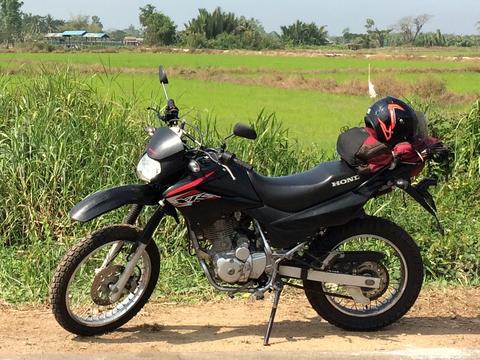
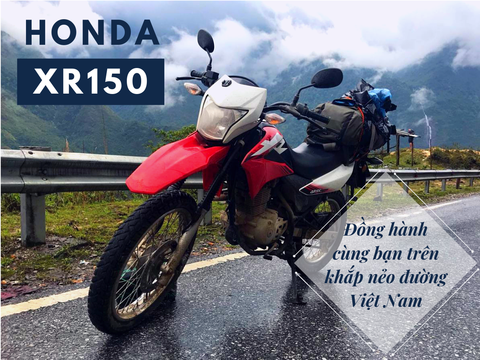
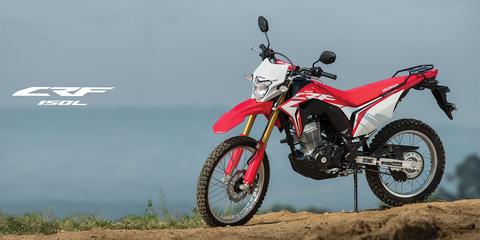

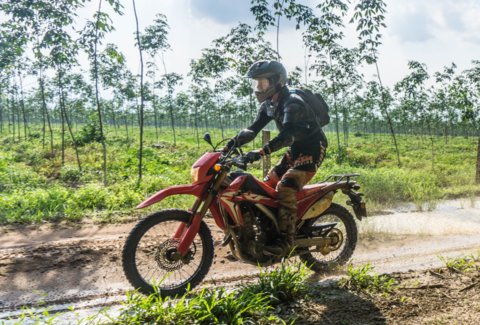


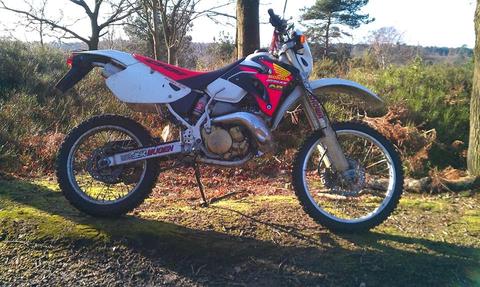
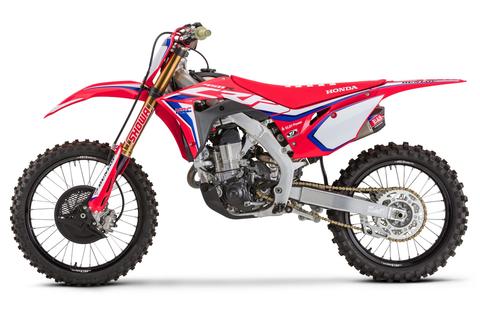

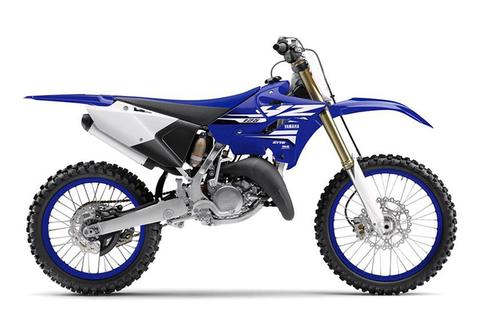
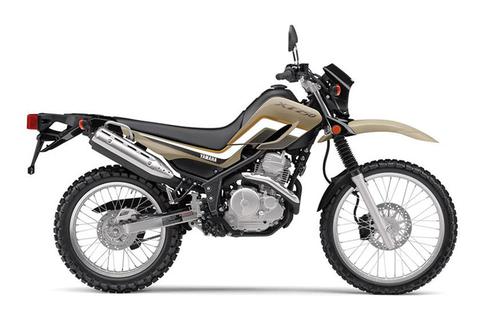

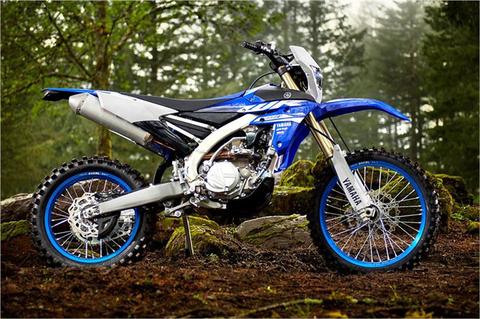
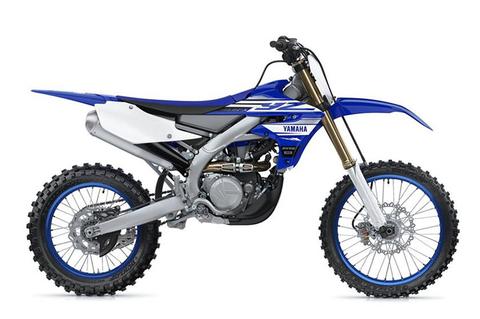
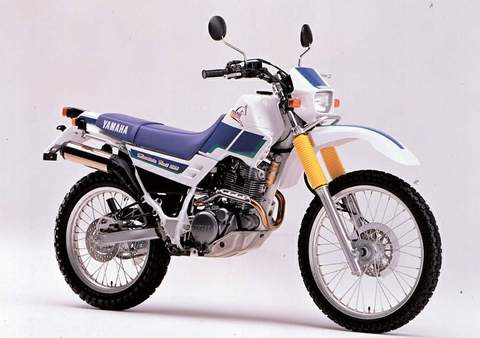


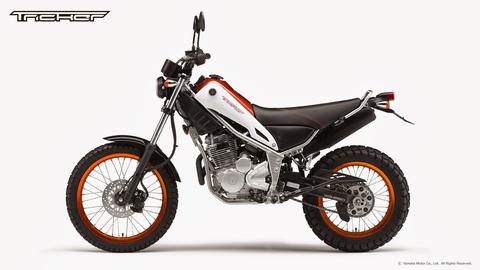

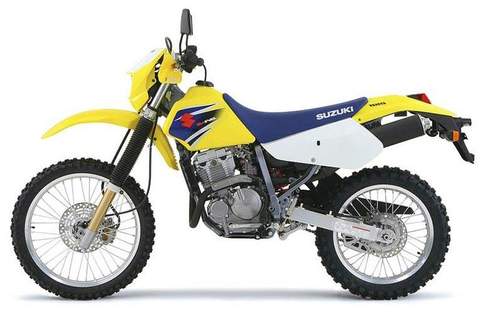
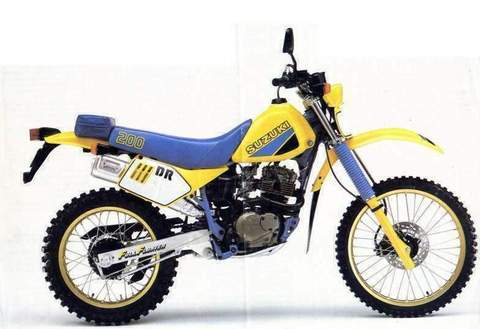


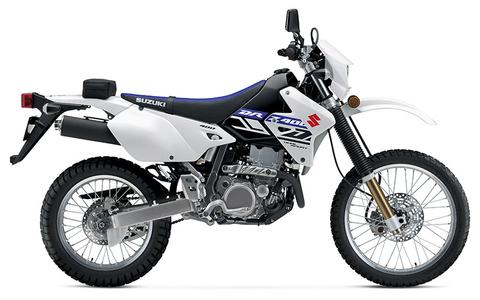


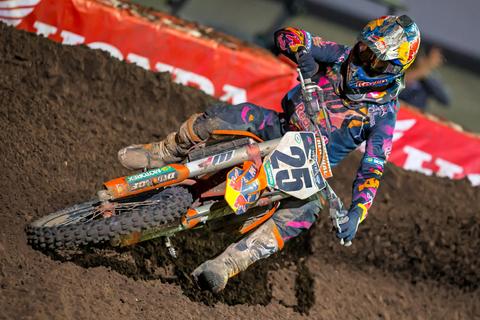

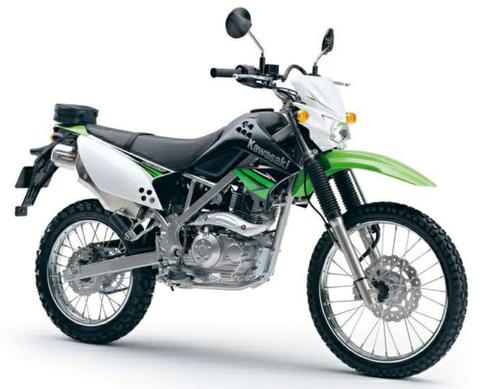


Log In